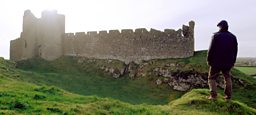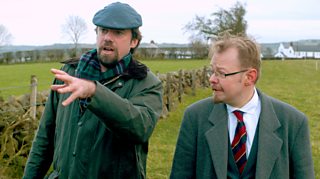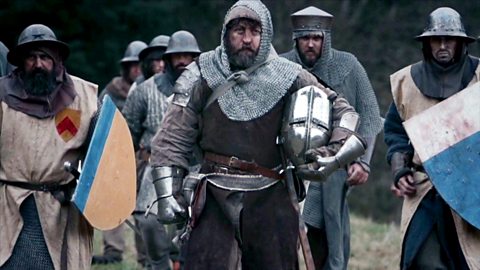Medieval Scotland’s Vietnam: Edward Bruce’s invasion of Ireland in 1315
By Dr Tony Pollard, Director of the .
The have been a focus for my work over the last decade. Across Scotland, I have visited battlefields to assess their condition and contribute to their preservation for future generations.
Some of these sites – notably Methven, Loudoun Hill and Inverurie – involved Robert Bruce, and possibly his brother Edward, but there is no doubt that the battle with which they are most closely associated is Bannockburn (1314).
I therefore jumped at the chance to follow in the footsteps of Edward Bruce by crossing the Irish Sea to learn about his campaign to invade Ireland which, I discovered, bore more than a passing resemblance to recent military misadventures, including notably the American involvement in Vietnam during the 1960s and 70s.

Following in the footsteps of Edward Bruce
Bannockburn did not bring an end to the war with England. The Wars of Independence rumbled on well beyond Robert Bruce’s death in 1329.
The Irish campaign remained on the edges of my knowledge.
I was familiar with the post-Bannockburn battles, such as Dupplin Moor (1332), Halidon Hill (1333) and the impact of Scottish raids into England — but the Irish campaign remained on the edges of my knowledge.
It is reassuring, though, that not many other people – and that includes historians – have much of an idea of the events of the ill-fated campaign either. It began in 1315 when Edward Bruce landed with a Scottish armada on the Irish coast and ended in his death in battle in 1318.
14th-century spin
I was accompanied on my travels by Irish historian Gavin Hughes who proved to be a mine of information when it came to the historical sources and the Irish background to the bloody events of 1315-18.

Those historical sources provided our first stop in attempting to unravel the trials and tribulations of Edward Bruce’s campaign, but it became immediately obvious that those sources were thin on the ground and the ones we did have were often vague and confusing.
One of the best known was The Bruce by John Barbour: a poetic account of Robert Bruce’s life written some 70 years after the Battle of Bannockburn. In reality, however, it is 14th-century spin, created to ‘big up’ Bruce’s achievements and legitimise his actions in taking the Scottish throne. I was familiar with its references to Bannockburn and other battles in Scotland, but I had not read the sections which dealt with Ireland.
One example of how little we know about the invasion – though this is not to deny how much recent historical works have shed light on it – is the uncertainty over the motivations for invasion. Some believe Robert Bruce wanted his brother Edward out of the way, with Ireland providing an arena in which his own ambitions to be a king could be fulfilled. There is also evidence that at least some of the Celtic Irish chieftains wanted aid from the Scots to fight Anglo-Norman aggression.
Associated with this plea for help is a theory that the Scots wanted to create a pan-Celtic coalition that could be pitched against the English, in the first instance by putting the over-bearing Anglo-Normans in their place (also known as Anglo-Irish; they had arrived in Ireland as recently as the mid to late 1100s). This alliance might also have included Wales, through which an invasion against the English could be channelled via Ireland.
No clear exit strategy
As to the motivations that guided the Bruce brothers to invade the land across the sea to the west, we will probably never know for sure, but it seems probable that a number of those cited above combined in 1315 to make what became a misadventure appear to be sound strategic thinking.
What this does mean, however, is that there were no clear aims to the war that followed in Ireland. This became apparent when I followed the convoluted paths of the various campaigns across the island. As the Americans discovered in Vietnam – and indeed the British more recently in Afghanistan – a lack of clear aims means that extracting oneself from a difficult position can be very difficult. And, as we know, Edward Bruce hung on in there for over three difficult years, when cutting his losses earlier might have made better sense.
Other parallels with more recent wars include: the difficulty of knowing who your friends are; the adverse conditions provided by landscape, climate and food supply (the invasion coincided with a famine); heavy losses among the occupying force; and civilian casualties.
After my own brief adventure in Ireland, I would certainly not claim to be an expert on this fascinating side-show in Scottish medieval affairs, but I do like to think there were times when my experience in reading terrain and my knowledge of the military capabilities of the armies of the time did help to make some further sense of at least part of this complicated story.
- Watch — 24 March at 2100 on 91�ȱ� Two Scotland

Trailer: After Bannockburn
The story of how a Scottish army tried to drive the English out of Ireland 700 years ago.
